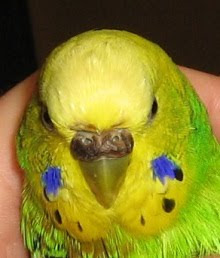
Psittacine Beak and Feather Disease (PBFD) is a viral infection that destroys a bird's immune system and damages beak and feather cells. According to Dr. Holly Nash, a veterinarian from Doctors Foster & Smith, Inc, this highly contagious disease is spread through droppings and feather dusts that contaminate the cage, food and water.
If infected while the bird is young, a parakeet will show signs of depression and weight loss. Feathers will become loose and break easily. Meanwhile, signs in older birds include bare skin due to loss of feathers and deformed and discolored feathers. Their beaks can become fractured or irregularly shaped. A green tint, as well as mucus, may also be present in their droppings.
Psittacine beak and feather disease is a viral disease that is found in parrots, which are also known as psittacines. The acute form of the disease is manifested by lethargy, loss of appetite, vomiting and diarrhea. Due to the severe suppression of the immune system, multiple secondary viral and bacterial infections will develop, which will cause the death within two to four weeks.
There is currently no specific treatment for the virus. The experimental vaccine has been proven to provide protection against the virus, but is likely to accelerate the disease in parrots already infected with the virus. A new vaccine developed by Dr. Siwo de Kloet protects birds from the virus and does not endanger birds already infected with PBFD.




